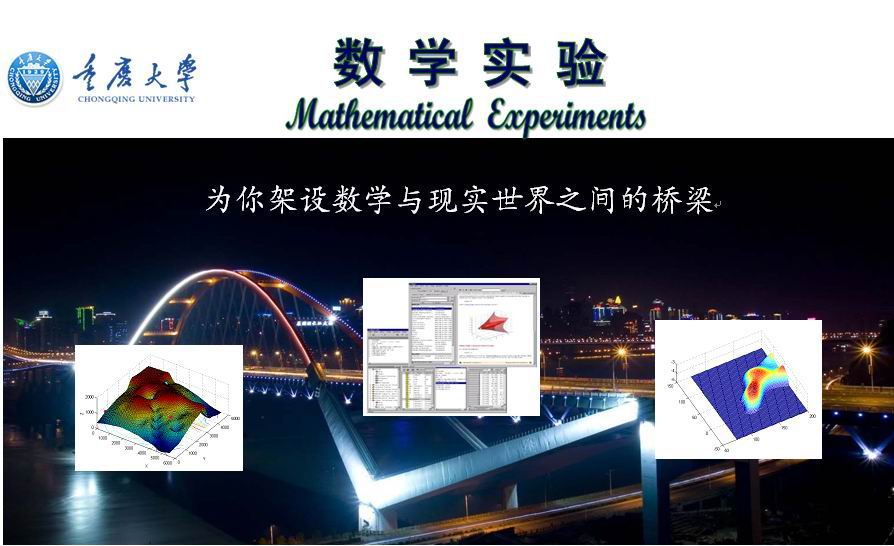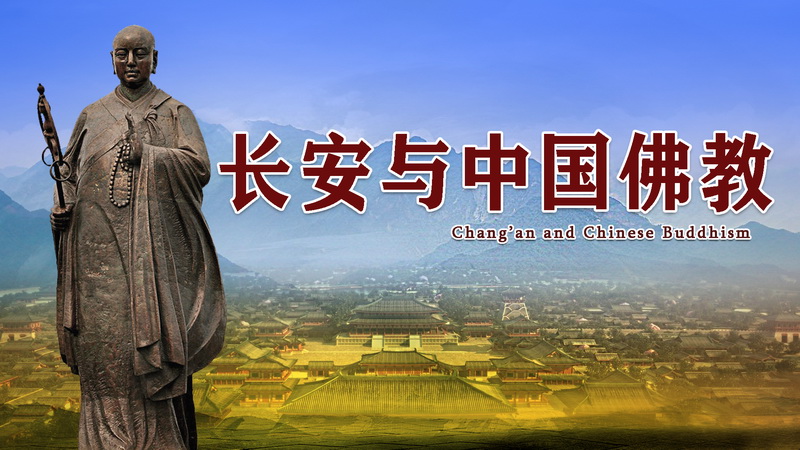
当前课程知识点:Five Disciplines of Management Quality and Ability —— Follow Me to Learn Management > The Third Discipline: Efficient Organization, Excellent Culture > 3.1 Basic Issues in Organization > 3.1 Basic Issues in Organization
返回《Five Disciplines of Management Quality and Ability —— Follow Me to Learn Management》慕课在线视频课程列表
返回《Five Disciplines of Management Quality and Ability —— Follow Me to Learn Management》慕课在线视频列表
大家好
作为管理素质与能力的第三项修炼
就是要建立高效的组织
并培养优秀的组织文化
这一次课
我们先来聊一聊
组织中的基本问题
在进入课程之前
先让我们来想一想
我去过这样一家公司
最近一年来
公司业务和人员规模都迅速扩大
出现了许多新的工作
有些工作 以前并不重要
可以不去顾及
或者由能干的办公室主任兼任就可以了
但是随着公司的发展
这些工作越来越多 也越来越重要
必须要去做好这些工作
总经理将这些新的工作
一项一项布置给了办公室主任
但总经理很快就发现
办公室主任不仅没有能够
做好这些新布置的工作
而且经常连原来的一些工作也没干好
总经理认为是办公室主任不够卖力了
我们在与办公室主任沟通后了解到
公司交给他的事情太多了
很多事情都是以前没有接触过的
办公室主任比以前更卖力更忙了
每天都要工作到很晚
他一直都在努力地去做
不仅身心疲惫
而且经常还会受到老总的批评
他完全没有了
以前曾经有过的成就感
再这样下去他准备辞职了
请大家思考一下
从组织设计的角度来看
能干的办公室主任为什么不再能干了
如何去解决这些问题呢
请带着你的思考
一起进入这次管理课程
什么是组织
组织就是指人们为实现一定的目标
互相协作而形成的集体
要建立一个高效的组织
需要解决哪些基本问题呢
第一个问题
就是选择什么形态的组织结构
我们应该选择金字塔型的组织结构
还是扁平化的组织结构
这里涉及到了
管理幅度与管理层次的问题
管理幅度是指
一名领导直接管辖的下级的数量
管理层次是指
职权等级链上所设置的
管理职位的级数
在组织规模确定的条件下
管理层次与管理幅度成反比关系
也就是说
每个主管直接管辖的下级人数越多
所需要的管理层次就越少
金字塔型的组织结构是属于
一种管理层次多
管理幅度小的组织结构
而扁平化的组织结构是属于
一种管理层次少
管理幅度大的组织结构
现在多数企业都在强调组织结构
要从传统的金字塔型结构
向扁平化的方向转化
为什么
是不是由于传统的金字塔型组织结构
就一定是缺乏效率的
我们说 不是
传统的金字塔型组织结构
在相当长的一段时间里
被认为是富有效率
能够带来效益
能够产金的一种组织结构
即使在今天
对于某些类型的组织而言 如军队
金字塔型组织结构
仍然是一种最佳的选择
那为什么我们很多的企业
又在主张组织结构
要向扁平化的方向发展呢
其根本原因在于
我们企业今天所面临的外部的环境
发生了彻底的变化
过去我们是处于一种
相对稳定的外部环境
在这种稳定的外部环境下
管理的重点是什么
是市场吗 不是
市场环境很稳定
特别是在过去那种
物质经济相对缺乏的年代
我们所生产的产品
总是能够卖出去
我们不需要过多地去关注
外部的环境
我们更加关注的是什么呢
企业内部的生产
一定要确保企业内部的生产
自上而下 井然有序 有条不紊
为了做到这一点
我们的管理幅度就不能够太宽
太宽就有可能管理失控
因为管理幅度较小
自然从上而下就形成了
很多的管理层次
这样我们可以做到
一级指挥一级
一级控制一级
我们内部管理
自上而下 井然有序
但是今天呢
我们大多数企业所处的外部环境
发生了彻底的变化
今天管理的重点更多地强调
一个企业必随着外部环境变化
快速做出反应
传统的金字塔型组织结构
它的弊端就开始暴露出来了
但是对于某些
特定类型的组织而言
为了强调自上而下 高度一致
我们仍然要去选择
金字塔型的组织结构
比如说军队
就是一种典型的
金字塔型组织结构
组织中的第二个问题是
组织中权利
应该集中还是分散
这就是组织中
集权与分权的问题
集权是指把较多 较重要的管理权责
集中在高层组织
分权是指
把较多且较重要的管理权责
分散到中下层组织
集权与分权是相对的
只有将二者很好地结合起来
一个组织才能健康地运作
组织中的第三个问题
就是选择什么类型的组织结构
我们知道
大自然界有一个普遍规律
就是结构决定特征
比如说 石墨和金刚石
内部构成元素完全一样
但是由于内部结构不一样
所呈现出来的功能和特征
完全不一样
因此 一个企业
它是否选择了一种合适的组织结构
对于这个企业
有着至关重要的影响
我经常到一些企业去
企业里通常会安排些人
给我介绍公司的一些基本情况
我就发现
有些人特别善于介绍
一下子就让我了解了
这个公司的基本概况
而有些人讲了一大堆
我还是不了解这个企业的概况
其实 要让别人在最短的时间里面
了解你企业的概况
最简单的一种方式就是
首先摆出我们公司的组织架构图
我们只要一看到组织架构图
对这个企业就有了一个基本的了解
因为结构是决定特征的
组织结构有很多具体的类型
如直线型 直线职能型 事业部型
矩阵型 网络型和控股型
我们应该去选择哪一种呢
在后面的课程中
我们将会给大家来进行介绍
现在让我们回到
课程开始前的 想一想
从组织设计的角度来看
为什么能干的办公室主任
不再能干了
一开始
办公室主任的工作顺风顺水
后来随着企业规模的扩大
业务的增加
但是公司并没有
相应地调整它的组织结构
而是将一些新的工作
全都堆在办公室主任身上
由于事情很多
使得办公室主任压力倍增
工作效果越来越差
能人不再能干了
我们可以看到 一个企业
如果没有选择
一个好的组织结构
那么 能人也是没有办法去
发挥他的长处
任何人都是要在
一个合适的组织结构中
才有可能去发挥他的长处
一个合理的组织结构
对于企业的发展十分重要
学以致用
在这次课程结束之前
我给大家留下一个思考题
请大家 用一用
在组织结构设计中
我们常常会遇到这样一个问题
到底是应该 因岗设人
还是 因人设岗
请大家根据所学的知识
谈谈你对这一问题的基本观点
关于思考题的答案
我们会在课程互动讨论区与大家一起讨论
并给出我们的观点
好 这次课就到这里
下次课见
-0.1 What is Management: The Secret of Management is to Borrow Resources
--0.1 What is Management: The Secret of Management is to Borrow Resources
--0.1 What is Management: The Secret of Management is to Borrow Resources
--0.1 What is Management: The Secret of Management is to Borrow Resources
-0.2 Natural Attribute and Social Attribute of Management
--0.2 Natural Attribute and Social Attribute of Management
--0.2 Natural Attribute and Social Attribute of Management
--0.2 Natural Attribute and Social Attribute of Management
-0.3 The Scientificity and Artistry of Management
--0.3 The Scientificity and Artistry of Management
--0.3 The Scientificity and Artistry of Management
--0.3 The Scientificity and Artistry of Management
-0.4 Management Functions, Skills and Roles
--0.4 Management Functions, Skills and Roles
--0.4 Management Functions, Skills and Roles
--0.4 Management Functions, Skills and Roles
-0.5 Case Study: Personal Excellence Doesn’t Mean Much
--0.5 Case Study: Personal Excellence Doesn’t Mean Much
--0.5 Case Study: Personal Excellence Doesn’t Mean Much
--0.5 Case Study: Personal Excellence Doesn’t Mean Much
-0.6 Centennial Management Context (Ⅰ)
--0.6 Centennial Management Context (Ⅰ)
--0.6 Centennial Management Context (Ⅰ)
--0.6 Centennial Management Context (Ⅰ)
-0.7 Centennial Management Context (Ⅱ)
--0.7 Centennial Management Context (Ⅱ)
--0.7 Centennial Management Context (Ⅱ)
--0.7 Centennial Management Context (Ⅱ)
-0.8 Case Study: Management Enlightenment of Journey to the West Team
--0.8 Case Study: Management Enlightenment of Journey to the West Team
--0.8 Case Study: Management Enlightenment of Journey to the West Team
--0.8 Case Study: Management Enlightenment of Journey to the West Team
-Course Introduction Unit Test
-1.1 Insight into the General Trend of the Environment (Ⅰ): PEST Method
--1.1 Insight into the General Trend of the Environment (Ⅰ): PEST Method
--1.1 Insight into the General Trend of the Environment (Ⅰ): PEST Method
--1.1 Insight into the General Trend of the Environment (Ⅰ): PEST Method
-1.2 Insight into the General trend of the Environment (Ⅱ): Porter’s Five Forces Model
--1.2 Insight into the General trend of the Environment (Ⅱ): Porter’s Five Forces Model
--1.2 Insight into the General trend of the Environment (Ⅱ): Porter’s Five Forces Model
--1.2 Insight into the General trend of the Environment (Ⅱ): Porter’s Five Forces Model
-1.3 Case Study: How McDonald’s Entered Chinese Market
--1.3 Case Study: How McDonald’s Entered Chinese Market
--1.3 Case Study: How McDonald’s Entered Chinese Market
--1.3 Case Study: How McDonald’s Entered Chinese Market
-1.4 Strategic Decision Analysis Tools: SWOT Analysis and BCG Matrix
--1.4 Strategic Decision Analysis Tools: SWOT Analysis and BCG Matrix
--1.4 Strategic Decision Analysis Tools: SWOT Analysis and BCG Matrix
--1.4 Strategic Decision Analysis Tools: SWOT Analysis and BCG Matrix
-1.5 Group Decision-making Tools and Methods: Delphi Method and Brainstorming Method
--1.5 Group Decision-making Tools and Methods: Delphi Method and Brainstorming Method
--1.5 Group Decision-making Tools and Methods: Delphi Method and Brainstorming Method
--1.5 Group Decision-making Tools and Methods: Delphi Method and Brainstorming Method
-The First Unit Test
-2.1 Attitude Determines Everything
--2.1 Attitude Determines Everything
--2.1 Attitude Determines Everything
--2.1 Attitude Determines Everything
-2.2 The Components and Formation of Attitude
--2.2 The Components and Formation of Attitude
--2.2 The Components and Formation of Attitude
--2.2 The Components and Formation of Attitude
-2.3 How to Change the Attitude of Employees
--2.3 How to Change the Attitude of Employees
--2.3 How to Change the Attitude of Employees
--2.3 How to Change the Attitude of Employees
-2.4 Responsibility and Efficient Execution
--2.4 Responsibility and Efficient Execution
--2.4 Responsibility and Efficient Execution
--2.4 Responsibility and Efficient Execution
-2.5 Ethics and Core Values
-The Second Unit Test
-3.1 Basic Issues in Organization
--3.1 Basic Issues in Organization
--3.1 Basic Issues in Organization
--3.1 Basic Issues in Organization
-3.2 How to Establish an Effective Organizational Structure (Ⅰ)
--3.2 How to Establish an Effective Organizational Structure (Ⅰ)
--3.2 How to Establish an Effective Organizational Structure (Ⅰ)
--3.2 How to Establish an Effective Organizational Structure (Ⅰ)
-3.3 How to Establish an Effective Organizational Structure (Ⅱ)
--3.3 How to Establish an Effective Organizational Structure (Ⅱ)
--3.3 How to Establish an Effective Organizational Structure (Ⅱ)
--3.3 How to Establish an Effective Organizational Structure (Ⅱ)
-3.4 Case Study: The Responsibility of the Sales Department
--3.4 Case Study: The Responsibility of the Sales Department
--3.4 Case Study: The Responsibility of the Sales Department
--3.4 Case Study: The Responsibility of the Sales Department
-3.5 Effective Communication Skills
--3.5 Effective Communication Skills
--3.5 Effective Communication Skills
--3.5 Effective Communication Skills
-3.6 Organizational Cultural Function and Content
--3.6 Organizational Cultural Function and Content
--3.6 Organizational Cultural Function and Content
--3.6 Organizational Cultural Function and Content
-3.7 Case Study: Resignation (Ⅰ)
--3.7 Case Study: Resignation (Ⅰ)
--3.7 Case Study: Resignation (Ⅰ)
--3.7 Case Study: Resignation (Ⅰ)
-3.8 Case Study: Resignation (Ⅱ)
--3.8 Case Study: Resignation (Ⅱ)
--3.8 Case Study: Resignation (Ⅱ)
--3.8 Case Study: Resignation (Ⅱ)
-The Third Discipline Unit Test
-4.1 How to Recruit Good Staff
--4.1 How to Recruit Good Staff
--4.1 How to Recruit Good Staff
--4.1 How to Recruit Good Staff
-4.2 Motivate Employees’ Work Potential
--4.2 Motivate Employees’ Work Potential
--4.2 Motivate Employees’ Work Potential
--4.2 Motivate Employees’ Work Potential
-4.3 Content-based Incentive Theory (Ⅰ): Hierarchical Theory and ERG theory
--4.3 Content-based Incentive Theory (Ⅰ): Hierarchical Theory and ERG theory
--4.3 Content-based Incentive Theory (Ⅰ): Hierarchical Theory and ERG theory
--4.3 Content-based Incentive Theory (Ⅰ): Hierarchical Theory and ERG theory
-4.4 Content-based Incentive Theory (Ⅱ): Motivator-Hygiene Theory
--4.4 Content-based Incentive Theory (Ⅱ): Motivator-Hygiene Theory
--4.4 Content-based Incentive Theory (Ⅱ): Motivator-Hygiene Theory
--4.4 Content-based Incentive Theory (Ⅱ): Motivator-Hygiene Theory
-4.5 Process-based Incentive theory: Expectation Theory and Fairness Theory
--4.5 Process-based Incentive theory: Expectation Theory and Fairness Theory
--4.5 Process-based Incentive theory: Expectation Theory and Fairness Theory
--4.5 Process-based Incentive theory: Expectation Theory and Fairness Theory
-4.6 Behavioral Transformation Incentive Theory: Reinforcement Theory
--4.6 Behavioral Transformation Incentive Theory: Reinforcement Theory
--4.6 Behavioral Transformation Incentive Theory: Reinforcement Theory
--4.6 Behavioral Transformation Incentive Theory: Reinforcement Theory
-The Fourth Unit Test
-5.1 The Essence and Tasks of Effective Leaders
--5.1 The Essence and Tasks of Effective Leaders
--5.1 The Essence and Tasks of Effective Leaders
--5.1 The Essence and Tasks of Effective Leaders
-5.2 Trait Theory of Leadership
--5.2 Trait Theory of Leadership
--5.2 Trait Theory of Leadership
--5.2 Trait Theory of Leadership
-5.3 Leadership Behavior Theory
--5.3 Leadership Behavior Theory
--5.3 Leadership Behavior Theory
--5.3 Leadership Behavior Theory
-5.4 Leadership Situation Theory
--5.4 Leadership Situation Theory
--5.4 Leadership Situation Theory
--5.4 Leadership Situation Theory
-5.5 Innovation and Entrepreneurship
--5.5 Innovation and Entrepreneurship
--5.5 Innovation and Entrepreneurship
--5.5 Innovation and Entrepreneurship
-5.6 Two New Trends of Innovation
--5.6 Two New Trends of Innovation
--5.6 Two New Trends of Innovation
--5.6 Two New Trends of Innovation
-The Fifth Unit Test
-Final Exam



